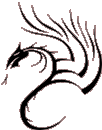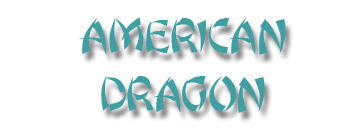INDIVIDUAL HERBS
| Pharmaceutical Latin: | Bulbus Allii Sativi |
| Common English: | Garlic Bulb |
| Taste | Temperature | Entering Meridians | Dosage |
Acrid |
Warm |
Stomach Large Intestine Spleen Lung |
4.5-15g Acute infection: 8-20g eaten immediately Tincture: 0.5-2ml |
| Actions | Indications/Syndromes |
Kills parasites |
Hookworms and pinworms and, with appropriate herbs for other types of intestinal parasites Tinea of the scalp |
Disperses abscesses and reduces swellings |
Primarily for early stages of abscesses and sores (internally and topically) |
Resolves toxicity |
Tinea and other pruritic rashes (primarily topically) |
Warms the Stomach, strengthens the Spleen, promotes the movement of Qi, reduces Stagnation and resolves toxicity |
Diarrhea and dysenteric disorders due to epidemic toxins or Food Stagnation (can be used as a stand-alone herb for mild cases of Food Stagnation) |
Prevents influenza and treats shellfish poisoning |
Bacterial and viral epidemics Shellfish poisoning |
CONTRAINDICATIONS |
|
INCOMPATIBILITIES |
HERB/DRUG INTERACTIONS |
|
Sm. Arecae |
Rz. Coptidis |
Vinegar Soaked |
Dislodges and expels roundworms and hookworms and other intestinal parasites |
Damp-Heat dysenteric disorders, consumption and sudden coughing |
Abdominal Cold and pain from Cold Qi lodged in the Intestines and Stomach |
Sesame Oil |
Rice Gruel |
|
Topically for toxic swellings |
Consumption |
Intestinal abscess |
Fol. Perillae |
|
|
With 30g Da Suan, made into a porridge and taken twice daily for ninety days to treat tuberculosis |
Various types of food poisoning |
|
- This herb reaches all five Yin organs and all of the orifices.
- It has a wide variety of actions. It treats accumulation of thin mucus or Food Stagnation, particularly meat, Cold pain in the epigastrium and abdomen, distention and fullness associated with Fluid Retention, diarrhea, malarial disorders, whooping cough, toxic swollen sores and snakebite.
- Ground into a paste and applied to the umbilicus, it eliminates edema and facilitates the movement of stool and urine.
- Bandaged to the middle of the sole of the foot, it guides Heat downward to treat diarrhea, sudden turmoil dysenteric disorder and stops nosebleeds.
- Decoct and take once a day for six days to treat diarrhea and dysentery. It can also be used as an enema.
- Take 5g to 10g daily with meals or use a 10% solution as nasal drops to prevent viral infection.
- Do not use on the head.
- It can be used as a preventative against pinworms by mashing it and applying it around the anus or rubbing it as a paste on areas which may be exposed to hookworms.
- Some sources say that this herb induces diaphoresis and can treat febrile diseases, arteriosclerosis, and hypertension.
- One source says not to decoct.
- It is commonly used as a food and is considered to be good for the cardiovascular system and has certain cancer-fighting attributes. It can be taken daily to promote health, but excessive use is sometimes associated with eye deterioration.
- It helps to neutralize toxins and relieve pain caused by centipede bites.
- Grind and mix with sesame oil and salt into a paste to apply topically for itching, rashes and swelling of the skin.
- Crush 30g into a paste and soak it in twice as much water for 12 hours, filter and mix with a small portion of sugar to treat whooping cough. Administer three times daily for ten to fifteen days.
- Apply topically as a paste for vaginitis due to amoebae or trichomonas.
- Apply as a 10% solution into the nostrils and take 5g to 10g with every meal to prevent influenza, encephalitis and other infectious diseases.

